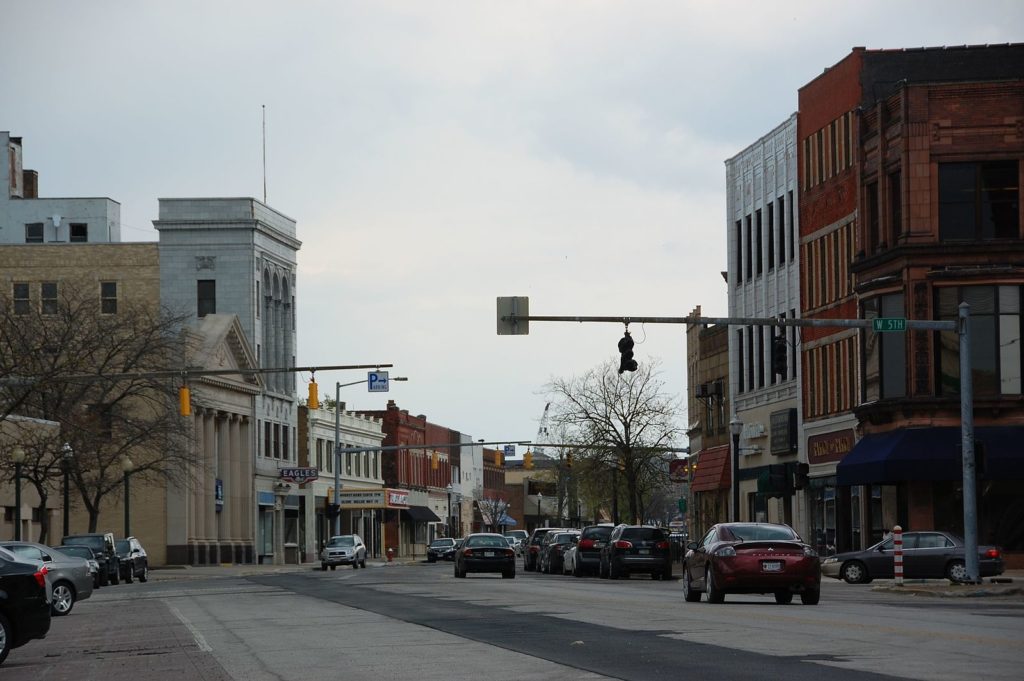
Bad policy decisions led to the loss of millions of jobs in industrial communities across America. Good policy decisions could lead to revitalization.
The House of Representatives’ Select Committee on Economic Disparity and Fairness in Growth met on Monday in Lorain, Ohio to examine ways to renew prosperity in the “forgotten communities” in America’s Industrial Heartland.
The new, bipartisan panel, modeled from President Franklin D. Roosevelt’s Temporary National Economic Committee, seeks to “study and recommend proposals to make our economy work for everyone, powering American economic growth while ensuring that no one is left out or left behind in the 21st Century Economy.”
Monday’s session featured expert testimony from local and national officials alike. In his opening remarks, Chairman Jim Hines (D-Conn.) expressed hope that the committee’s work would be an opportunity for Congress to listen to the concerns of workers, a skill, he joked, that is oftentimes missing in Washington, D.C.
But after several decades of policies that led to the offshoring of millions of good jobs from the region, there’s a lot of work to do to renew hope in America’s heartland. Dee Baker, Lorain Urban League’s Director of Community Outreach and Engagement, painted a portrait all too familiar to many Americans.
“The economic struggles of Lorain County mirror the devastating fate many other Rust Belt regions in the Midwest have faced over the last three decades,” Baker said. “Across the region, manufacturing industries that once turned natural resources into economic wealth have faced precipitous decline due in large part to advancements in automation and the expansion of global trade, leaving many of the small towns that once served as the country’s economic heartbeat on life support.”
“Each year,” Baker continued, “companies in Lorain County continue to shutter, placing workers in an increasingly precarious position. So many companies have downsized, forcing full-time workers to subsist on part time hours and pay. Laid-off steelworkers are struggling to find work and provide for their families. Their cars have been repossessed. Their homes have been forced into foreclosure. They have suffered both a financial and mental toll.”
Lourenco Goncalves, CEO and Chairman of Cleveland Cliffs, which employs upwards of 25,000 steelworkers, bluntly concluded:
“Nearly 30 years down the path of this globalist experiment, we now recognize the equation: we export our jobs and economic might and in return America gets some cheap goods, global pollution, hallowed out communities, drug addiction and the politics of division.”
“Amazon warehouse jobs are fine,” Goncalves said, “but they will never provide support for families and communities in the way that steelworker jobs did here in Lorain… with middle-class wages, pensions, profit sharing and healthcare.”
Pat Choate, the director of the Manufacturing Policy Project and former running mate of Ross Perot, struck a similar chord from a national perspective.
“Looking backward from today’s vantage point, we can define three distinct Big Tradeoff eras since 1900,” Choate said. “Between 1900 and 1932, efficiency dominated. In the Roosevelt era between 1933 and 1980, equity prevailed. In the Reagan era between 1981 and today, efficiency dominated.”
But could we be approaching a new era? Richard Cain, vice president of United Steelworkers (USW) Local 1104, presented the committee with a choice that could serve as grounds for cautious optimism.
“Defending and strengthening our country’s workers and lowering economic disparity requires at least three key strategic shifts by our country: (1) refocusing federal domestic investments on critical infrastructure; (2) retooling our labor and environmental laws for a twenty-first century democracy; and (3) exporting not just our goods, but our ideals, for a just global economy,” Cain said. “Trade policy in particular must play a dual role of defending our communities from unfair trade practices by governments and foreign multi-national corporations, while ensuring the goods and services our workers produce can reach global markets.”
One of the keys to renewing hope in the Industrial Heartland must be a commitment to keeping workers in their communities. Both Baker and Lorain Mayor Jack Bradley expressed concern about a “brain drain” from the region, which will make it harder for the area to recover.
New education initiatives can help. Kelly Zelesnik, Dean of Engineering, Business, and Information Technologies at Lorain Community College, testified that applied apprenticeships have found so much success that her institution has re-oriented their approach toward these manufacturing programs.
Panelists also discussed other ways to encourage development, including investments in building both physical and human infrastructure, the use of opportunity zones, and rebuilding critical supply chains.
“We also need to support policies that defend our critical infrastructure and national security, like the Section 232 tariffs, which have been a boon for the domestic steel industry, and have permitted firms to re-invest more than $15.7 billion in new or upgraded steel facilities creating at least 3,200 direct new jobs,” Cain said.
The message from workers and community leaders could best be summarized by Cain: “We have to reverse this trend and ensure that government policy uplifts our kids and communities… We need to tackle globalization with an eye toward ensuring economic prosperity for all.”

